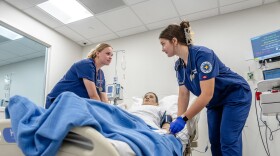Breathing is the most natural thing we do. But how often do you really take a deep breath? Breathing is an involuntary and automatic process, but it’s one bodily function that we can voluntarily change and control.
When you’re busy, anxious, or stressed, you may notice that your breathing pattern changes – you may be taking shallow breaths, holding your breath or even gasping. This is the best time to take a deep breath.
READ: How To Improve Your Standing Posture
Making time to practice healthy breathing techniques will improve your oxygen intake, reduce your stress levels, and allow you to feel calm and relaxed.
Get your watch and count how many breaths you take in a minute. While the normal breathing rate varies by person, on average it takes about four to six seconds for a complete cycle of breath – inhale and exhale. The fewer the breaths per minute the more relaxed you will feel.
Are you a mouth or a nose breather?
How you breathe impacts the quality of the breath and the amount of oxygen delivered to vital tissues of your body — including your brain. Less oxygen equals less alertness and focus.
Mouth breathing tends to use the muscles of the neck and shoulders, relying less on using the natural contraction of the diaphragm and the muscles between the ribs. Mouth breathing can also expose the fragile membranes of your lungs to foreign particles as you breathe.
Nasal breathing filters and warms the air you breathe. It also reduces the number of breaths you take per minute.

How to tell if you're a chest or belly breather
Where you breathe is also important. Here's how you can tell if you're a chest or belly breather:
- Place one hand on your heart and one on your belly.
- Breathe in and out through your nose.
Where do you feel movement happening first? Chest or belly?
If you feel more movement happening in your chest than in your belly, you may be using more neck and shoulder muscles to help you breathe. Using these muscles increases tightness in the shoulders and upper back. Plus, you may be taking shallow breaths so you may not be getting enough oxygen. This can make you feel foggy and less focused.
But belly breathing is ideal. Practicing abdominal breathing for five to 20 minutes every day will improve your lung capacity, increase your oxygen intake and reduce your stress levels.
Tips and exercises to improve your breathing:
Exercise 1 - Belly breathing
- Improve your breathing by improving your posture. Sit tall with a long spine with your chest opened and shoulders rolled back and down.
- Place one hand on your heart and one hand on your belly. Take three deep breaths in and out through the nose.
- Shift your awareness down to the belly, oxygen filling it like balloon. You should feel the rib cage expanding outwards and you may feel the spine lengthening.
Exercise 2 - Lateral breathing
- Deepen the breath by stretching the lungs to capacity and using more of your muscles between the ribs.
- Place both hands on the belly and take three deep breaths.
- Shift hands outwards with your fingers on the front of your ribs and your thumbs wrapping around the side of the rib cage.
- Try to expand and stretch this area of the rib cage with just your breath – from the inside out. Take three deep breaths in and out through the nose.







